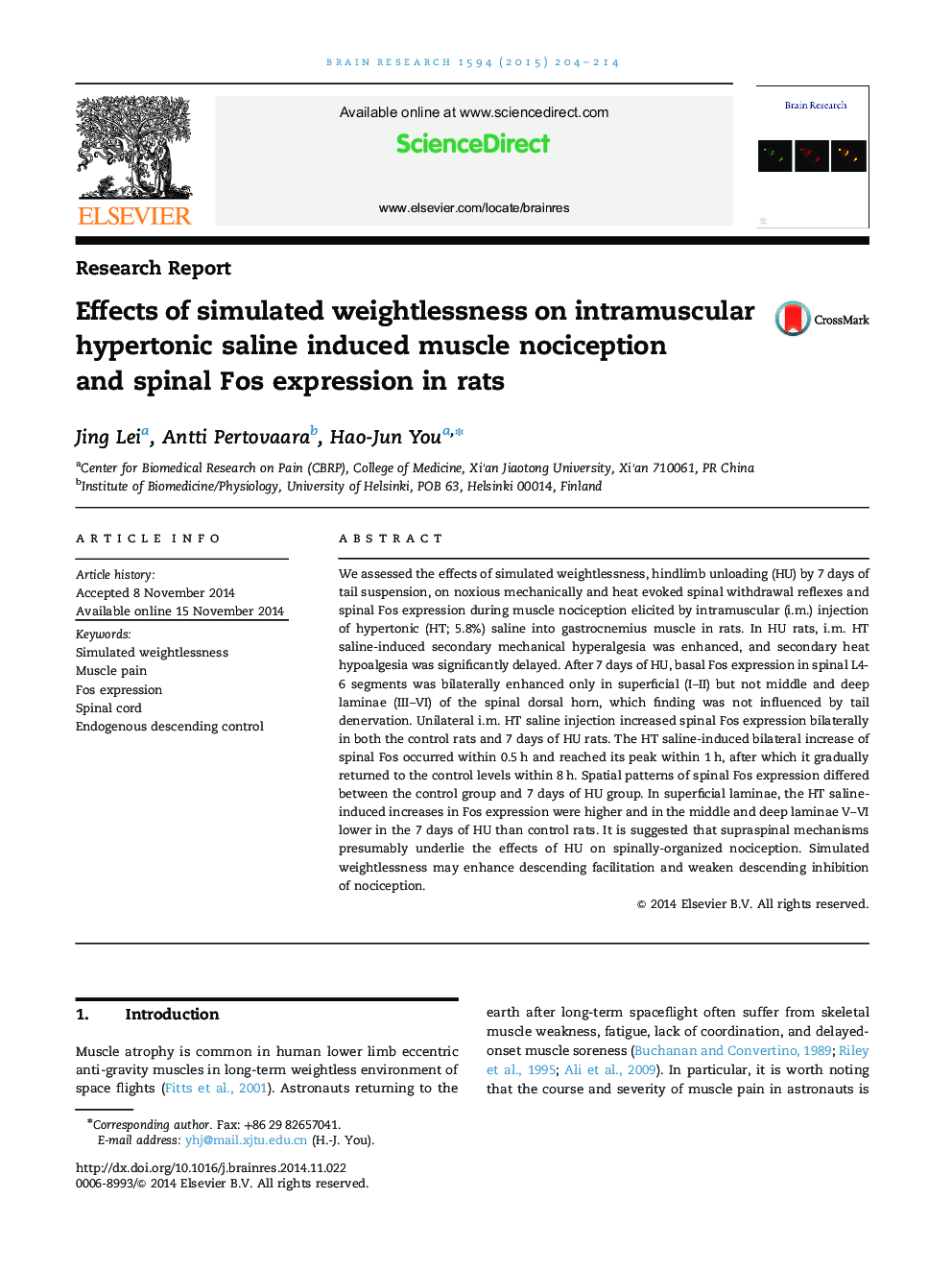| Article ID | Journal | Published Year | Pages | File Type |
|---|---|---|---|---|
| 4324021 | Brain Research | 2015 | 11 Pages |
•We assessed effects of hindlimb unloading (HU) on nociception and its modulation.•Mechanically and heat evoked nociception were differently influenced by HU.•Supraspinal mechanisms presumably underlie the effects of HU on nociception.•HU enhanced descending facilitation and weakened descending inhibition.
We assessed the effects of simulated weightlessness, hindlimb unloading (HU) by 7 days of tail suspension, on noxious mechanically and heat evoked spinal withdrawal reflexes and spinal Fos expression during muscle nociception elicited by intramuscular (i.m.) injection of hypertonic (HT; 5.8%) saline into gastrocnemius muscle in rats. In HU rats, i.m. HT saline-induced secondary mechanical hyperalgesia was enhanced, and secondary heat hypoalgesia was significantly delayed. After 7 days of HU, basal Fos expression in spinal L4-6 segments was bilaterally enhanced only in superficial (I–II) but not middle and deep laminae (III–VI) of the spinal dorsal horn, which finding was not influenced by tail denervation. Unilateral i.m. HT saline injection increased spinal Fos expression bilaterally in both the control rats and 7 days of HU rats. The HT saline-induced bilateral increase of spinal Fos occurred within 0.5 h and reached its peak within 1 h, after which it gradually returned to the control levels within 8 h. Spatial patterns of spinal Fos expression differed between the control group and 7 days of HU group. In superficial laminae, the HT saline-induced increases in Fos expression were higher and in the middle and deep laminae V–VI lower in the 7 days of HU than control rats. It is suggested that supraspinal mechanisms presumably underlie the effects of HU on spinally-organized nociception. Simulated weightlessness may enhance descending facilitation and weaken descending inhibition of nociception.
